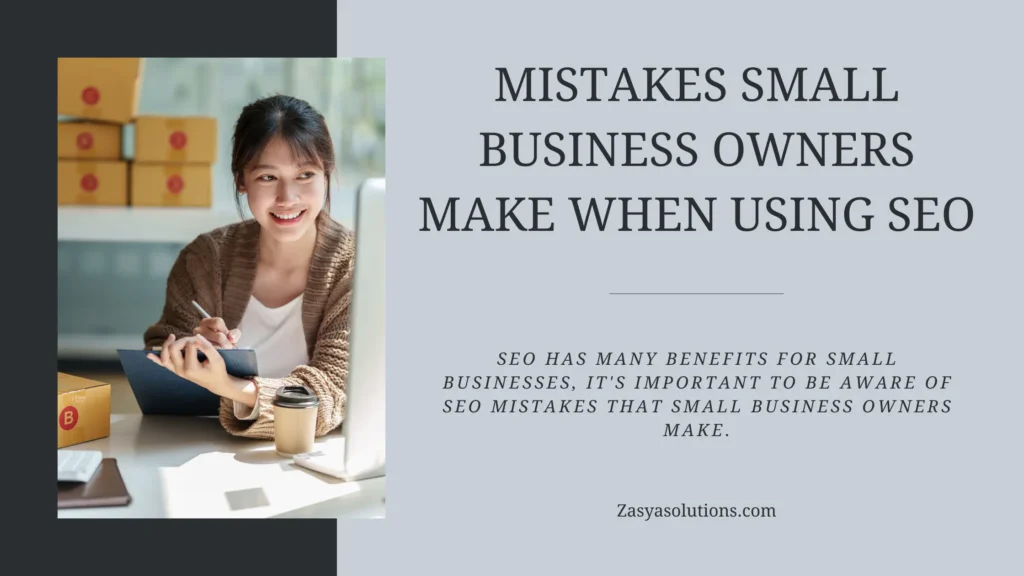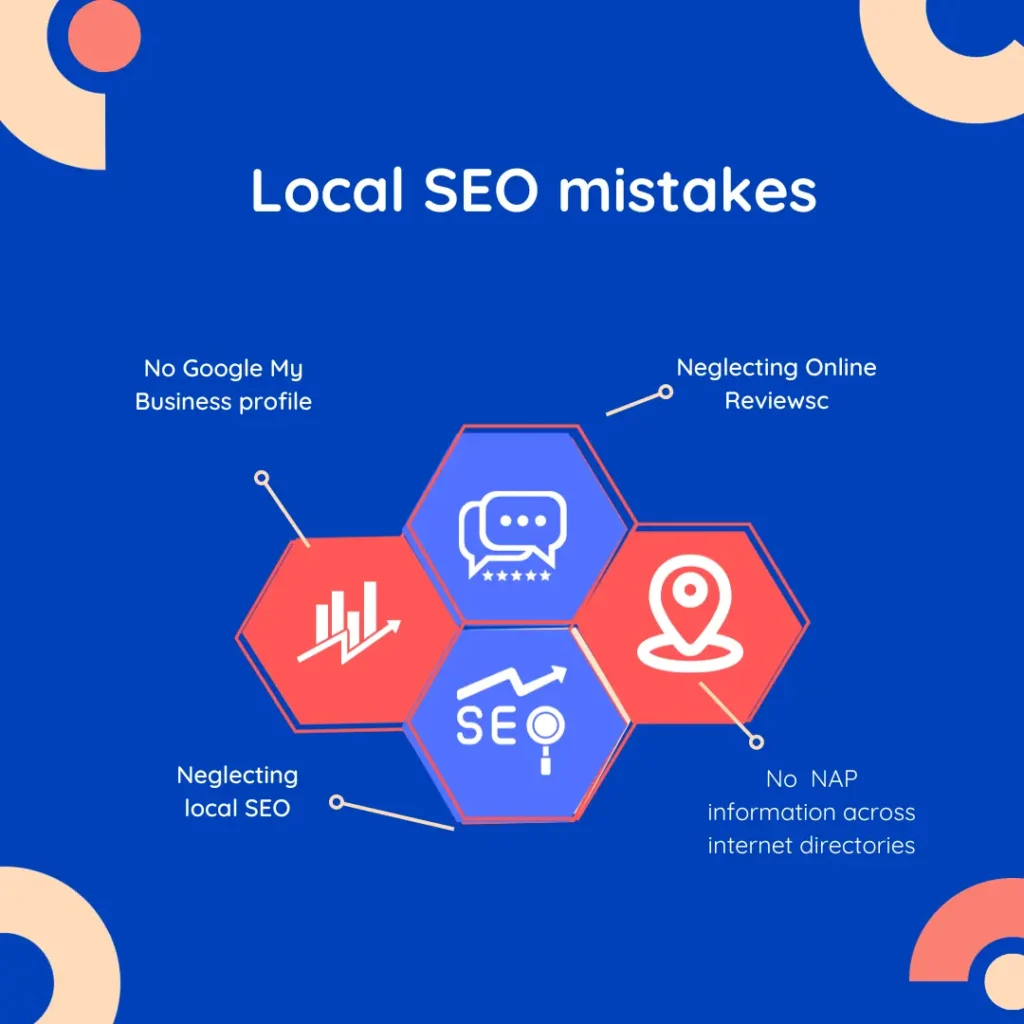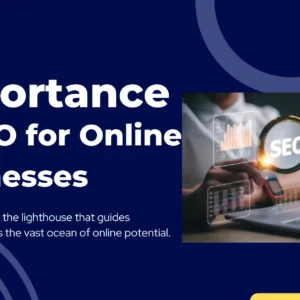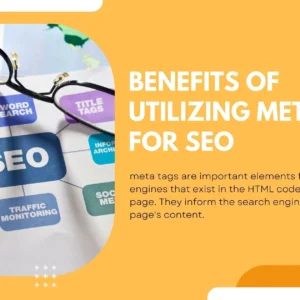SEO is a vital component for small businesses navigating the digital landscape, combining e-commerce and digital marketing to elevate online presence. However, small business owners often make critical SEO mistakes that can hinder success. In this comprehensive guide, we’ll explore key SEO errors, ranging from technical aspects to content optimization, local SEO, and social media visibility.
Key Takeaways:
- Schema markup, Google Search Console, and internal link building are often overlooked but crucial for technical SEO.
- Neglecting meta tags, image optimization, and website speed can negatively impact search engine visibility.
- Content optimization errors include lack of keyword research, neglecting on-page optimization, and writing solely for search engines.
- Local SEO is essential, yet some businesses ignore optimizing Google My Business and maintaining consistent NAP information.
- Social media plays a significant role in SEO, and overlooking its impact can hinder online visibility.
- Monitoring, adaptation, and consistent branding are vital for sustained SEO success.
- Building high-quality backlinks, avoiding excessive links on a page, and addressing miscellaneous issues contribute to effective SEO.
What are the common SEO mistakes made by small business owners, and how can they address these issues to optimize their online presence?
Small business owners often make technical SEO errors, such as neglecting schema markup and overlooking Google Search Console. Content optimization mistakes include a lack of keyword research and ignoring on-page SEO elements. Local SEO is frequently undervalued, and the impact of social media on SEO is often ignored. Consistent monitoring, avoiding outdated techniques, and maintaining brand consistency are essential. Backlink quality is crucial, and issues like excessive links, splash pages, and text-heavy images should be addressed for optimal SEO performance. Success in the SEO circus requires strategic keyword use, careful backlinking, analytics utilization, and embracing the slow, steady nature of SEO.
Introduction:
SEO is one of the key aspects that is a game changer for online businesses. It is because of the blend of e-commerce and digital marketing. SEO plays a major role in taking small businesses to new heights. A well-executed SEO and digital marketing plan improves online exposure. It delivers organic traffic to the website of a small business. This enhanced visibility not only raises brand recognition but also develops customer trust. In an age where people rely on search engines to make shopping decisions, having a strong online presence is no longer an option—it’s a need.
Although SEO has many benefits for small businesses, it’s important to be aware of SEO mistakes that small business owners make. So, we will explore certain SEO topics, including possible problems, to help small companies succeed in the digital sphere.

In the coming section, we will examine SEO mistakes by small business owners that are important to them.
1. Technical SEO mistakes by small business owners:
A. Failing to add schema markup:
Schema markup is something small business owners overlook when it comes to SEO and digital marketing. Schema markup gives search engines more context about the information on your website. It improves their comprehension of the material and how it appears in search results. Failure to use schema markup can cause missed possibilities for rich snippets and increased exposure in SERPs.
Solution:
- For your website, use structured data to put in place schema markup.
- To find and mark up pertinent data, like product specifications, reviews, events, and more, use Schema.org.
- This can result in improved display characteristics in search results.
- It also helps search engines better comprehend your material.
B. Neglecting Google Search Console:
Another error is to ignore the Google Search Console. This tool finds problems with indexing. It offers information on search queries. It also provides insightful information about how Google sees your website. Small business owners who don’t use Google Search Console miss important data. This data can be used to improve their website’s user experience and search engine performance.
Solution:
- Use the Google Search Console to track and check the functionality of your website.
- Take care of any problems the program finds, and upload your sitemap.
- Also, use the information it provides to find areas that might need improvement.
- Keep yourself updated on search terms, indexing issues, and other developments. By doing so, you can adjust your site’s optimization.
C. Ignoring internal link building:
Building internal connections is something that some small business owners undervalue. Well-designed internal linking facilitates search engines’ exploration and comprehension of your website’s architecture. Ignoring this component may result in an inconsistent content hierarchy. It might have an impact on the user experience and search engine results.
Solution:
- Create a systematic internal linking plan.
- Make sure the links are useful and enhance the user experience.
- Use descriptive anchor text and establish a logical structure to make your website easier for search engines to navigate.
- To keep a structure cohesive, examine and update internal linkages regularly.
D. Overlooking meta tags:
Meta tags, such as title tags and meta descriptions, are important in SEO and digital marketing. Some small business owners, however, ignore their significance. Well-written meta tags may increase click-through rates and provide search engines with useful information about your content. Failure to optimize meta tags may decrease search results’ visibility and click-through rates.
Solution:
- Optimize each page’s title tags and meta descriptions.
- Create succinct and appealing descriptions that appropriately portray the material.
- Avoid keyword stuffing by using appropriate terms.
- Review and update meta tags regularly to correspond with your content and any changes to your company’s offer.
E. Neglecting image optimization:
Images are important for user engagement, yet failing to optimize images is a typical error. This includes neglecting to use descriptive file names and alt text. It also fails to compress photos for faster download times. Image optimization not only increases website performance but also aids search engines in understanding the content. Ultimately, it will result in improved SEO.
Solution:
- Use descriptive file names and alt text to optimize photos.
- Image compression is used to reduce file sizes without sacrificing quality.
- Select appropriate image formats (e.g., JPEG, PNG) based on the content.
- Review and optimize photos regularly to ensure they contribute favorably to user experience and SEO.
F. Neglecting website speed:
Website speed is an important consideration for the user experience and search engine rankings. Small-business entrepreneurs frequently make the mistake of ignoring website performance improvement. Slow-loading pages can increase bounce rates and negatively influence SEO rankings. It is critical to prioritize website speed to retain visitors and improve search engine results.
Solution:
- To find areas for improvement, use tools such as Google PageSpeed Insights.
- Optimize pictures, use browser caching, and reduce server response times.
- Use material delivery networks (CDNs) to distribute material internationally and improve loading speed.
- Monitor and fix variables that contribute to delayed page loading regularly.
G. Ignoring security and technical aspects:
Small business owners frequently neglect security and technological issues. Search engines value safe websites, and ignoring security precautions might hinder your SEO and digital marketing efforts. Technical difficulties such as broken links, 404 errors, or incorrect redirection can harm the user experience and search engine results. Regularly fixing these technological components is critical for maintaining a healthy and optimized website.
Solution:
- Ensure your website has an SSL certificate for safe HTTPS communications.
- Regularly update your website’s software, plugins, and themes to correct security flaws.
- Conduct frequent security checks, fix broken links, and create suitable redirects.
- For thorough technical SEO audits, utilize tools such as Google’s Lighthouse.
- Regular maintenance and monitoring are essential for a safe and technically sound website.
2. Content optimization mistakes by small business owners:
A. Lack of keyword research
One major error that small business owners make is failing to conduct extensive keyword research. Businesses risk providing material that does not fit with user search queries. If they do not grasp the phrases potential customers use to locate products or services. Keyword research is essential for discovering relevant phrases and inserting them into website content.
Solution:
- Conduct extensive keyword research with tools like Google Keyword Planner and other SEO tools.
- Determine useful keywords that are relevant to your business and target demographic.
- Update your keyword strategy regularly to reflect industry developments and changes in user behavior.
B. Neglecting on-page optimization
Small company owners frequently disregard on-page SEO. This entails optimizing individual web pages to increase search engine results. Neglecting on-page features like meta titles, meta descriptions, header tags, and picture alt text might reduce a website’s visibility in search results.
Solution:
- Pay attention to on-page features like meta titles, meta descriptions, header tags, and picture alt text.
- Ensure that these pieces are optimized with relevant keywords and appropriately represent the information on each page.
- Review and update on-page items as appropriate.
C. Not utilizing quality content
Focusing primarily on keywords and ignoring content quality is a major error. Search engines emphasize useful and relevant material. Small companies should invest in developing useful, entertaining, and shareable content to attract and keep visitors.
Solution:
- Invest in developing high-quality, educational, and entertaining content.
- Understand your audience’s demands and provide them with quality content.
- Consider using multimedia components like photographs, movies, and infographics to improve the user experience.
D. Writing for search engines, not people
Some business owners make the mistake of writing content just for search engines. They compromise readability and user experience in the process. Balancing SEO optimization and producing material appealing to human readers is critical. Content should be informative, entertaining, and simple to grasp.
Solution:
- Strike a balance between SEO optimization and usability.
- Write organically and with readability in mind.
- Focus on offering good content to your readers while naturally combining important keywords.
E. Duplicate content throughout the website
Duplicate content on several pages of a website might undermine SEO efforts. Search engines like original and distinctive information. Businesses should avoid repeating material from one page to the next. Also, instead, focus on developing unique and relevant content for each page.
Solution:
- Ensure that each page on your website has original and quality information.
- If the same information is required, find new methods to convey it on each page.
- If duplicate material is inevitable, use canonical tags to identify the preferred version of a page.
F. Keyword stuffing
Keyword stuffing is the excessive use of keywords to affect search engine rankings. This antiquated practice delivers a bad user experience and may result in search engines punishing the page. It is critical to insert keywords naturally while maintaining content balance.
Solution:
- Incorporate keywords wisely and naturally into the material.
- Concentrate on developing material that flows effectively and adds value to the reader.
- Aim for a fair keyword density and emphasize the user experience above excessive term utilization.
G. Too many links on a page
Overloading a page with excessive links, both internal and external, can negatively impact SEO. Search engines may perceive it as spammy behavior. Small business owners should prioritize quality over quantity when it comes to links, ensuring they are relevant and add value to the user.
Solution:
- Prioritize the quality and relevance of links over quantity.
- Ensure that each link adds value to the user experience.
- Consider using descriptive anchor text and organizing links in a way that makes navigation intuitive.
- Regularly audit and update links as needed.
H. Letting content become stale
Regularly updating and revising material is critical for SEO. Some business owners make the mistake of developing content and then ignoring it. Outdated material can impair a website’s trust and relevance in search results. Regularly monitoring and updating material keeps it relevant and aligned with growing search engine algorithms.
Solution:
- Create a content calendar to plan frequent updates and refresh current material.
- Monitor industry trends and update material to reflect the most recent facts.
- Encourage user participation through comments and social media.
- Respond to feedback to keep the material dynamic and current.
3. Local SEO mistakes by small business owners:

Neglecting local SEO
Many small company owners make the mistake of undervaluing the value of local SEO. Local search optimization is critical for firms targeting a specific geographic region. Neglecting local SEO means missing out on prospective clients in the area who actively seek out local items or services. It entails improving Google My Business accounts, gaining local backlinks, and providing consistent NAP (Name, Address, Phone Number) information across internet platforms.
Solution:
- Create and optimize a Google My Business profile with appropriate business information.
- Encourage consumer feedback and actively manage and reply to it.
- Maintain uniformity in NAP information across internet directories.
- Participate in local events, sponsorships, and partnerships to develop local backlinks.
4. Social Media and Visibility:
A. Focusing solely on traffic:
One typical SEO error made by small business owners is to focus on increasing website traffic at the expense of the quality of those visitors. Even though many visitors could look impressive, it’s important to draw in customers interested in your goods or services. The probability of conversions and consumer engagement rises with targeted visitors. Rather than obsessing over absolute figures, concentrate on optimizing for keywords. You must produce content that resonates with your intended audience.
Solution:
- Start concentrating on targeted traffic instead of just the traffic volume.
- Conduct in-depth keyword research to ensure your content is optimized for your target audience’s search terms.
- Produce top-notch, pertinent content that meets your audience’s needs and interests.
- Use analytics tools to monitor user activity and modify your SEO plan in response to the effectiveness of particular keywords and content.
B. Neglecting social media presence:
Some small company owners don’t realize how important social media is to SEO. Your online presence may suffer if you ignore social media sites like Facebook, Twitter, and Instagram. Search engine algorithms take into account social signals like likes and shares. A robust social media presence enhances trust, consumer engagement, and brand recognition. Engage with your audience, update your social media sites frequently with pertinent material, and utilize social media platforms wisely to support your entire SEO strategy.
Solution:
- Integrate social media into your overall marketing strategy.
- Establish a consistent and active presence on relevant social platforms.
- Share engaging content, participate in conversations, and encourage social sharing.
- Use social media as a channel to promote your content, products, and services.
- Leverage the power of social signals by encouraging followers to share and interact with your posts, which can positively impact your SEO rankings.
C. Expecting instant results:
Anticipating quick benefits from SEO work is another error. Long-term tactics like search engine optimization call for perseverance and steady work. Some business owners may become disheartened if they don’t immediately notice an increase in traffic or rankings. It’s critical to realize that algorithms change gradually. SEO takes time to provide results. Put your attention into producing excellent content, constructing solid backlinks, and using moral SEO techniques. Always have reasonable expectations and consider SEO a continuous process that eventually produces long-lasting effects.
Solution:
- Create a reasonable schedule for your SEO work and establish attainable goals.
- Recognize that SEO is a long process; you may need time to see the benefits.
- Concentrate on producing timeless, valuable material that endures.
- Keep an eye on performance data and modify your approach accordingly, but refrain from making snap decisions.
- A strong foundation built using moral SEO techniques, high-quality content, and persistent work will help a website achieve long-term, sustainable success in search engine rankings.
5. Monitoring and Adaptation
A. Lack of consistent monitoring and analysis
One common SEO mistake small business owners make is to stop tracking and evaluating the effectiveness of their websites. SEO and digital marketing are dynamic profession, with search engine algorithms changing constantly. Businesses may miss opportunities to optimize their approach if users’ behavior and current trends are not routinely observed. Companies can determine what is effective and what needs improvement by doing regular analyses. This enables them to modify their search engine optimization strategies for better outcomes.
Solution:
- To track website performance, set a regular timetable for SEO audits.
- Use SEO tracking platforms and tools like Google Analytics to monitor important data.
- These are keyword rankings, bounce rates, and organic traffic.
- Analyze the data to find patterns, possibilities, and areas needing development.
- By frequently monitoring performance, small business owners may make educated decisions to change their SEO methods for the greatest results.
B. Relying on outdated techniques:
Another trap is using obsolete SEO tactics. Search engines are evolving, and once-helpful tactics may become obsolete or harmful. Some small company owners may continue to use obsolete techniques without understanding that they are no longer subject to current search engine rules. It’s important to stay current with SEO trends and algorithm updates to maintain a competitive online presence. Also, make sure that optimization efforts adhere to modern best practices.
Solution:
- Stay updated on the latest SEO trends and algorithm changes.
- Follow reputable industry blogs, attend webinars, and take part in forums.
- Review and update SEO strategies to align with current best practices.
- Embrace new technologies and tools that enhance optimization efforts.
- Engaging with the SEO community and seeking professional advice can provide insights into effective, up-to-date techniques.
- These align with search engine guidelines.
C. Inconsistent branding:
Inconsistent branding can significantly influence a small business’s SEO efforts. The user experience is a priority for search engines. A consistent brand image enhances the online experience. Small companies may make a mistake using inconsistent branding or content across all digital platforms. Both consumers and search engines may become confused by this lack of consistency. It might result in poorer search rankings and less exposure. To improve SEO performance, small company owners must maintain a consistent brand identity approach across their websites, social media accounts, and other online platforms.
Solution:
- Clearly define your brand’s messaging, tone of voice, and visual components.
- Make certain that the website, social media accounts, and company listings are all consistent with one another.
- Stay consistent with your brand image by reviewing and updating material.
- Enhancing user trust and having a favorable impact on SEO performance are two benefits of consistent branding.
6. Backlinks and linking:
A. Failing to build high-quality backlinks:
High-quality backlinks are crucial for SEO. Small business owners frequently overlook their significance. The search engine rankings of your website may suffer if you focus on number over quality in your link profile. The legitimacy of your website may suffer if you get backlinks from spammy or low-quality websites. This might result in search engine penalties. To increase your website’s authority, focus on constructing useful and authoritative backlinks from reliable sites in your sector.
Solution:
- Devote time to developing backlinks using a calculated strategy.
- Concentrate on producing worthwhile, shareable material. It must draw connections from reliable websites on its own.
- Reaching out to partners, industry influencers, and reliable sources may help cultivate connections. It may result in high-quality backlinks.
- Take advantage of guest blogging chances on pertinent websites to highlight your experience. Also, get backlinks from reputable websites in your industry.
B. Too Many Links on a Page:
Putting too many links on a page is another error. Links on a single page can reduce their value. It can negatively impact the user experience. Search engines might consider a page with many links spammy or of poor quality. Finding the right balance is crucial to making sure connections are pertinent, presented appropriately, and improving the user experience. Put quality before quantity to keep your website’s linking structure organized and functional.
Solution:
- Perform a comprehensive content audit of your website to find pages with excessive links.
- Sort the links according to importance and remove those that are superfluous or redundant.
- Group similar links into categories and use drop-down menus and other navigational tools to keep the layout neat and orderly. Rather than attempting to add many links on a single page, concentrate on providing thorough, well-structured content that organically includes relevant connections.
- Maintain a user-friendly and well-balanced linking structure by regularly reviewing and updating your material.
7. Miscellaneous:
A. Having a splash page:
It’s a common error made by small business owners to have a splash page as the entrance to their website. Splash pages can be detrimental to SEO, even if they may look visually pleasing. Search engines prefer direct access to pertinent material. Splash pages can provide users with a bad experience since they frequently include little information. Visitors may go fast if they can’t discover what they’re searching for. It might result in increased bounce rates and possibly poorer search engine results.
Solution:
- Create a clear, intuitive homepage for your website that offers quick access to pertinent material instead of a splash page.
- Make the most of your primary landing page by adding eye-catching calls-to-action, concise content, and easy navigation. This enhances the user experience and complies with search engine algorithms. All these favor relevant and easily accessible material.
B. Using images with excessive text
It might be counterproductive to SEO attempts to include crucial content in photos. Search engines use text to interpret a website’s meaning and context. Search engines may find it difficult to properly index and analyze the information included in pictures. Text in photos is not readable by screen readers, which affects the website’s accessibility and can turn off some visitors. Using descriptive text in addition to images is essential for improving SEO. Text inside visual components should not be the only thing used.
Solution:
- Use HTML for text components and separate text content when utilizing pictures.
- Make sure all the important information is on the page in text form so that search engines can readily access it.
- Use alt text to explain the picture content and give search engines context if text-rich images are required. This strategy guarantees that a wider audience may interact with your website’s information, boosting SEO. It also makes your website more accessible.
In a Nutshell:
Small company owners navigating the SEO circus should avoid keyword abuse, as cramming them in carelessly turns a website into a confused carnival. Quality backlinks, not numbers, are critical—think twice before shaking hands with shady sources. Consider analytics to be your tightrope walker. Disregarding data is like trying a blindfolded tightrope walk. SEO is a marathon, not a sprint. Avoid the pull of instant gratification. Balance and patience are essential in this digital circus. So, fellow company ringmasters, choose your keywords properly, tread carefully on the backlink tightrope, keep an eye on the analytics safety net, and remember that success in the SEO circus is a slow show. With a little fun, your online presence may be the main attraction at the top of search engine results.






